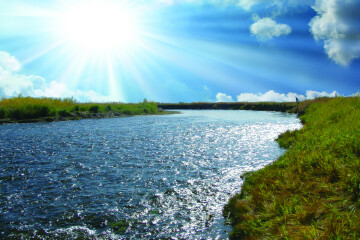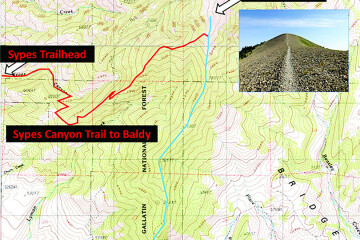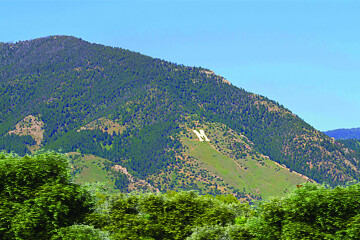What's Your Beef?: Bozeman’s People, Native Trees and Urban Forest Are Intertwined
Environmentally responsible development is key to ensuring Bozeman’s future as “the most livable place.” We who support the protection of Bozeman’s existing native trees regard this statement as self-evident because it reflects Aldo Leopold’s idea that the well-being of people and land is intertwined. It’s no secret that trees provide a long list of environmental and social benefits, including, but not limited to, shade, temperature regulation, windbreaks, storm water absorption, soil stabilization, clean air production, dark sky enhancement, biodiversity, wildlife habitat and corridors, beauty, and stress reduction. In addition, trees sequester carbon, making them a crucial resource to combat climate change. People need trees and now, with Bozeman’s rapid pace of growth, trees need people.
Environmentally responsible development is a theme consistent with City of Bozeman (City) municipal code (i.e., law) and vision documents. However, when new development destroys large numbers of trees—especially native, mature cottonwood, aspen, and willow—it is not environmentally responsible. For example, hundreds of mature cottonwoods, aspens, and willows were recently removed along Fowler Lane, Goldenstein Lane, South 19th Avenue, and elsewhere within City limits—all during peak bird nesting season.
With an eye to Bozeman’s future, and our collective role as land stewards, we highlight two developments in progress. The first, Canyon Gate, is a story about loss. The second, Gran Cielo II, is a story about how a forest can be saved.
The Canyon Gate residential-commercial development site comprises 24 acres in northeast Bozeman. On June 13-15, 2023, the developer bulldozed approximately 140 mature cottonwood trees, destroying this self-sustaining grove while displacing dozens of birds during the height of nesting season. Moreover, the habitat provided by this cottonwood grove is no longer available to deer, moose, black bear, and other wildlife that previously used the area.
The destruction of the Canyon Gate cottonwoods largely resulted from an unapologetically indifferent review by City planning staff. The developer’s proposed 60 “workforce” housing units were just too tantalizing—even though they were conceptually placed right where the cottonwood grove already stood. There is a simple, clear development code that provides a general standard intended to protect existing topography, soil, trees, and other vegetation “to the extent possible.” Sadly, this loophole makes it so the code is not applied at all. In the span of three days, the developer bulldozed something which took decades to grow, and we all lost a portion of our City’s urban forest.
The Gran Cielo II residential development site comprises 80 acres in southwest Bozeman. At risk is a three-acre, aspen-cottonwood forest that provides habitat for dozens of species of birds and other wildlife, including invertebrates that are key to the food web. Ecologically, this forest is self-sustaining and fully functional. The developers have suggested that they intend to spare most, but not all, of the forest from road building, and that they are consulting with an arborist and landscape architect to assist them in doing so. Their intentions seem good, and consulting an urban forest ecologist and routing roads around those three-acres would ensure this forest’s protection and leave a lasting, impactful legacy of which the developer, the City, and all Bozeman residents could be proud.
However, from the Canyon Gate story, we have learned that Gran Cielo II’s three-acre forest will be at the mercy of City staff, City commissioners, and developers. To fully protect this forest, stricter enforcement of existing environmental protection codes is essential. Additionally, there should be a mandatory subdivision review by a City-employed urban forest ecologist, but such a position does not currently exist. This is something the City should strive to rectify.
Ultimately, the City and developers must come to understand that there are no shortcuts in the process of forest ecology. Urban forests, especially those that still exist in their natural state, are a form of wealth to the world, with a value beyond estimation. We understand that residential and commercial development will continue. As it does, we expect developers to be environmentally responsible, and we expect City planning staff and City Commissioners to enforce existing environmental protection codes—or strengthen them immediately if need be. Finally, we urge all Bozeman residents to advocate for environmentally responsible community development. This will help ensure Bozeman’s future as “the most livable place” for people, wildlife, and the trees that sustain us all.
Daniel Carty, Marcia Kaveney, Lara Schulz, Angie Kociolek, and April Craighead advocate for Bozeman’s existing native trees and urban forest.



